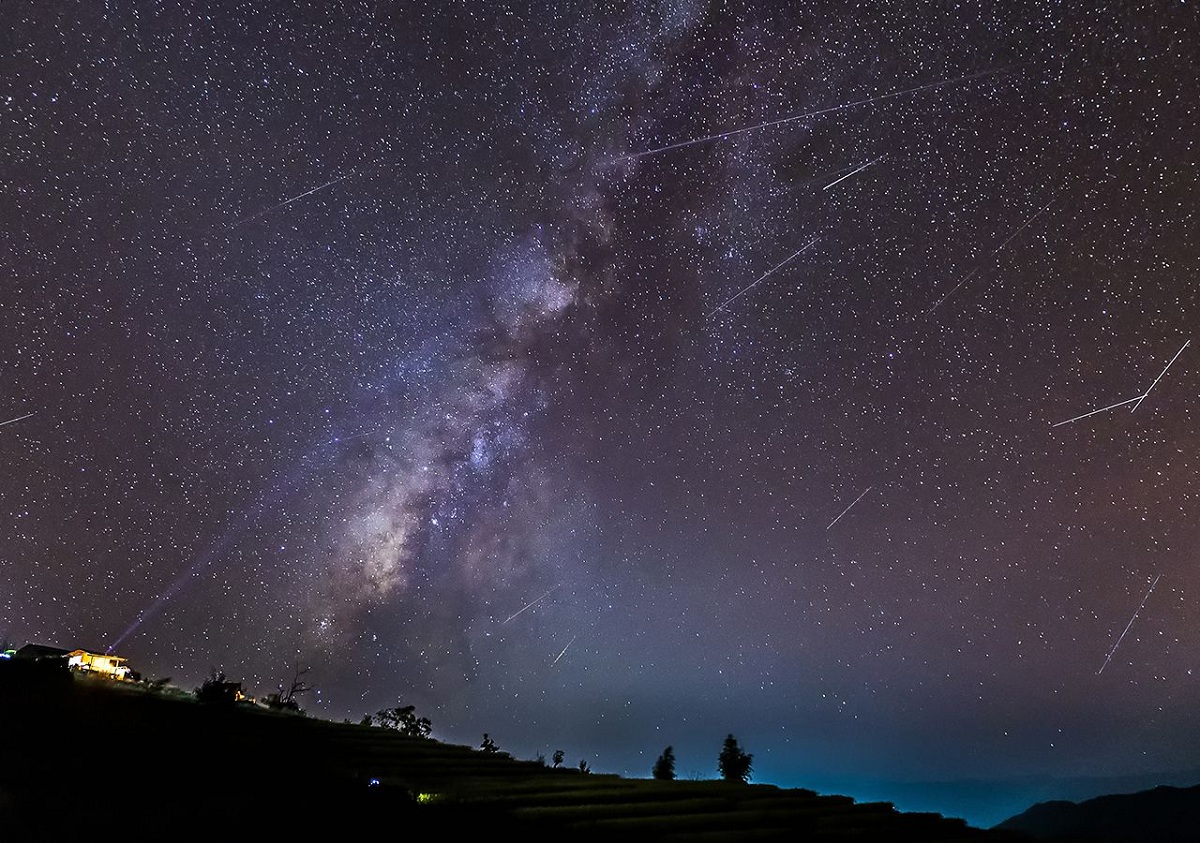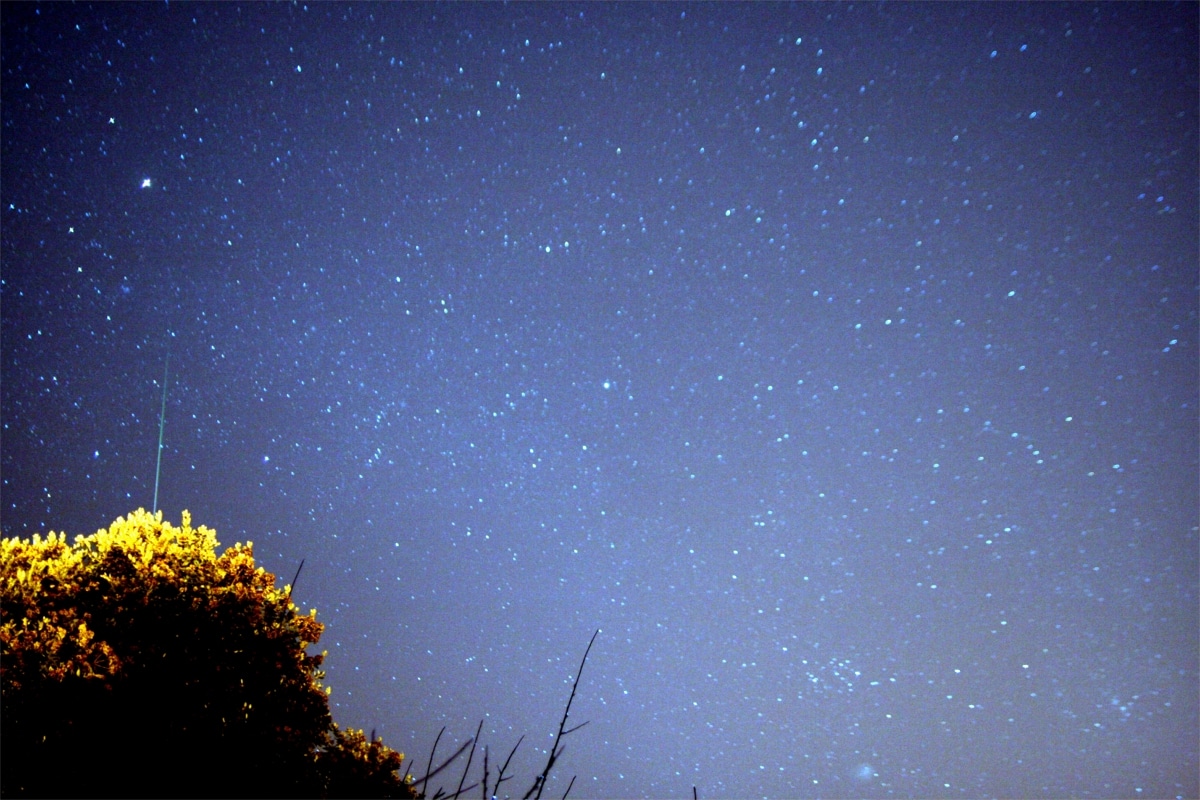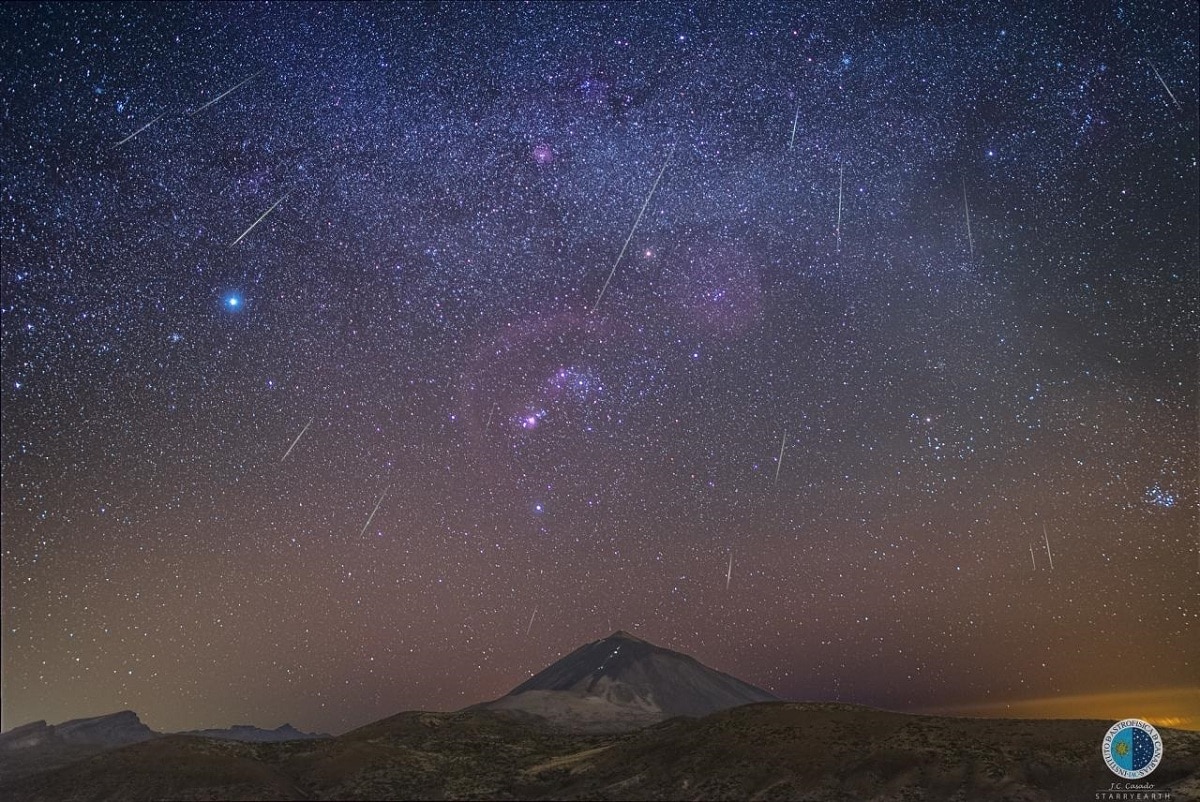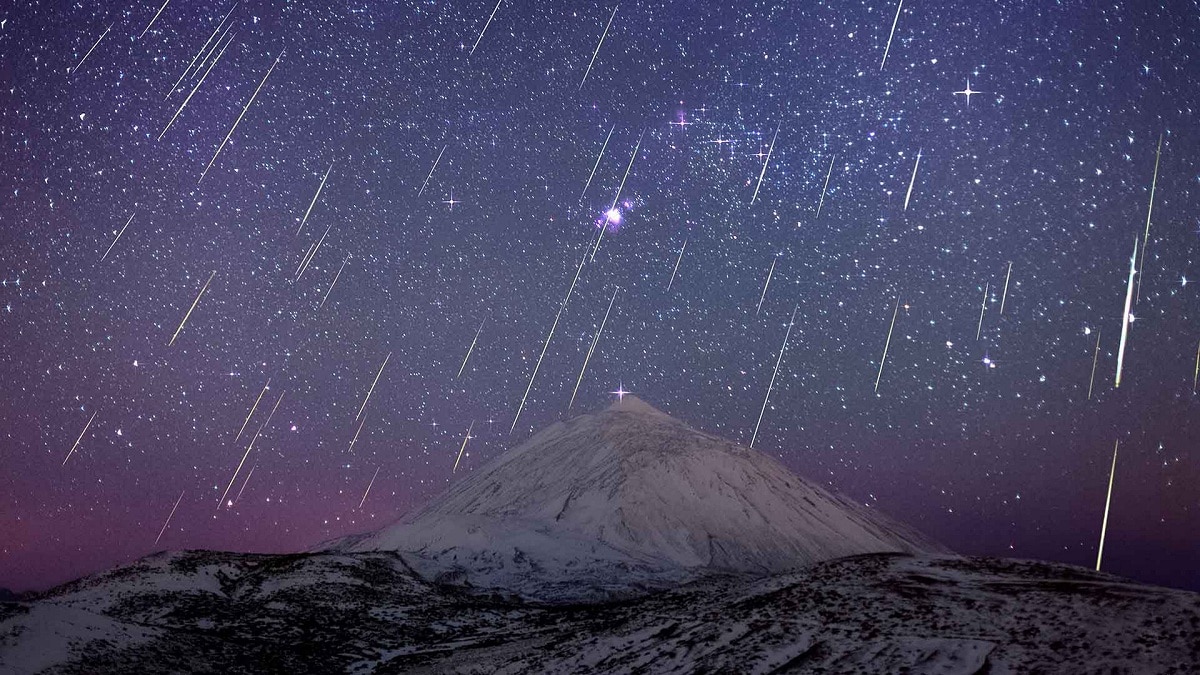
Today we are going to talk about one of the meteor showers that are extremely active and are worth seeing. It's about frost Geminids. It is a group of stars that seems to come from a point in the constellation of Gemini, hence its name, and are visible from the beginning to the middle of December. It has a peak that occurs around the 14th of that month each year and is the time when you can observe 100 or more meteors per hour.
In this article we are going to tell you everything you need to know about the Geminids, their characteristics and how to see them.
Key features

As long as the sky conditions are ideal, they have sufficient visibility and it is a moonless night, they can be seen more than 100 meteors per hour during the heyday of the Geminids. This makes it the most active meteor shower that can be seen today. This algae is the same level as the quadrantids that appear in the month of January.
In addition to intense radiation, the gravitational force exerted by the sun can also break through the outer layers of comets or asteroids. Remnants remain in orbit and move at extremely fast speeds, and when Earth gets close enough, they enter the atmosphere. The friction caused by contact with atmospheric gases ionizes them, appearing as a flash of light at high altitude, and the heat completely evaporates the meteor.
The fragments rarely fall to the ground. In this case, they are called meteorites, and when they are still in orbit, they are called meteoroids. In this way, the debris is classified, depending on whether it is outside the atmosphere or inside the atmosphere, or it eventually lands.
Origin of the Geminids

The Geminids are a group of meteor showers quite unusual for their origin that is not a comet, but an asteroid. The asteroid is known by the name of Phaeton and was discovered in 1983, almost all the meteor showers are made up of comets and, therefore, the Geminids are the exception.
Astronomers disagree with the nature of this object because it appears to have a mixed asteroid-comet characteristic, although observations did not reveal the typical Phaeton coma of comets. The general difference between one celestial body and another is that comets are usually made of ice, while asteroids must be rocks.
There is a hypothesis that the Phaeton was a comet 2000 years ago, but when it was very close to the sun, its gravity caused a great disaster, the orbit changed tremendously, leaving behind a large amount of debris, today we call it Geminids.
It seems that the Gemini meteor showers did not appear immediately after this event, because the first record of their appearance dates back to 1862. On the other hand, other meteor showers, as Perseids and the Leonids themselves, have been around for centuries.
The fact is that even if the meteor shower is related to the debris left by asteroids and comets, it is not always possible to see the debris left by the last approach each year.
The debris that produced this year's meteor may have been created a long time ago and has remained in orbit ever since. But we must consider that the orbits are not stationary, they change due to gravitational interaction with other objects.
Description of the Geminids

Geminids are so named because they appear to come from a point in the constellation Gemini called the radiant. This is just a perspective effect, because the trajectories are parallel and appear to converge in the distance, like train tracks. But it does provide a way of naming for all the major meteor showers, so these meteor showers are named after the constellation where the radiant point is located.
The shower begins to be visible around December 4 and continues until the 17th, with the peak of activity around the 13th or 14th. The zenith hourly rate, the rhythm of the zenith or THZ is the number of meteors per hour in ideal conditions of visibility, including cloudless and moonless skies.
The zenith rate of the Geminid meteor shower is one of the highest: 100-120 meteors per hour, which shows that the fragments left by the Phaeton have not scattered much so far. Furthermore, observations show that the zenith rate has increased slightly since the rain was discovered.
The population index measures the brightness of the trails left by the meteor cluster, and the Gemini meteor shower is yellow. It depends on factors such as the mass and speed of the meteor, and is represented by r.
Its value is almost always set to 2, but in a mathematical model adjusted to the behavior of Gemini, the value is r = 2.4, which is 2.6 during the maximum period of activity. By itself, the yellow color indicates the possible presence of iron and sodium in the composition of the fragments.
When and how to observe them
In order to observe the Geminids we can go anywhere on the planet. They can be seen from both hemispheres, although it can be seen more clearly from the northern hemisphere. The radiant begins to be visible in the afternoon, while in the southern hemisphere you have to wait for midnight. Like any star shower, the hourly meteor rate increases as time passes and radiant is higher than the sky. The best times to observe the meteor shower corresponding to the Geminids is during the early morning until sunrise.
During the day the rain to continue, but it is more difficult to appreciate since the speed of the fragments is not very fast compared to other meteor showers. The best observations They are made by choosing a place away from the light pollution of the city and hoping one day that there is no moon in the sky and that we are at a good height. The meteors are going to be seen more numerous with the course of the night.
I hope that with this information you can learn more about the Geminids and their characteristics.